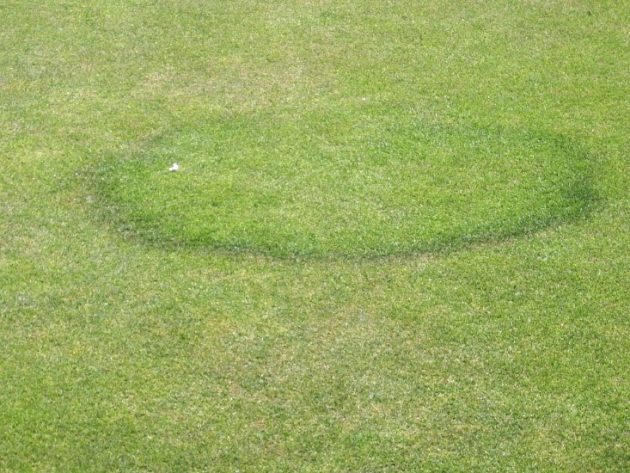As ubiquitous as lawns are, you’d think they’d be easier to take care of. In most parts of the country, it isn’t a simple task to keep a lawn verdant and lush; you need to devote hours upon hours every month to chores that ensure the plant is healthy and thriving. Sometimes, grass can go bad even when you think you are doing everything right — and you might not notice the signs unless you know what to look for.

Your lawn has its own way of communicating, so it can tell you what it needs and what is going wrong. This guide is like lawn language 101, teaching you the basics of recognizing common problems and treating your lawn with the proper care.
Brown Spots
Brown spots are some of the most common lawn problems, and that’s because there are several things that cause them. While it could be a pest, a disease or an issue with watering or sunshine, brown spots are most often caused by one of the following issues:
Pets. Dogs have an annoying habit of peeing in the same spots in your yard. If their chosen spot is somewhere on your lawn, the high nitrogen content of their urine will likely burn your grass to a crisp, causing a brown or bare spot.
pH balance. Grass prefers to grow in a slightly acidic soil, with a pH of about 6.5. If your soil is too acidic or basic in some spots, it’s likely that grass won’t grow there. Fortunately, you can adjust the pH of your soil with limestone and sulfur. However, if your pH is off because you spilled something onto your lawn, like muriatic acid for your pool, you might want to replace the soil and patch your lawn with sod.
Obstructions. Grass roots need to dig down into the soil before blades shoot up, so if there is something preventing the roots from growing, you’ll have brown spots in your lawn. You might need to dig for rocks or gravel up to an inch below the soil.
Wilted Blades
When you see wilting, your lawn is veritably shouting “WATER!” During the hotter months of the year, your lawn will benefit from long, slow soaks as opposed to shorter and more frequent waterings in the spring and fall. You need to be sure the water is penetrating a few inches into the soil, or else your lawn will go into drought mode and wilt.
Crop Circles
No, aliens haven’t landed on your lawn; crop circles are the result of a fungus growing in the soil. At first, your grass might appear greener and healthier in that ring because the fungus provides more decaying matter, which is good for grass. However, as the fungus flourishes, it will starve the grass of water and nutrients. You should quickly spray a fungicide on the affected areas of your lawn, but if that doesn’t work, you might need to replant the ring with new soil and sod.
If your crop circles look thicker and more irregular, they might not be the work of a fungus — your doggo might again be to blame. Dogs tend to walk the same path around the yard, like security guards performing a regular check. Over time, this trailblazing compacts the soil of your lawn, preventing it from growing properly. In this case, aeration is your friend, but you might also want to consider installing a hardscaped path for your pup.
Mats
Generally, the longer you let your grass grow, the better — but if your lawn is starting to look matted, it might be time to fire up the mower. Cool-season grasses, like Kentucky bluegrass, should be kept between 1 and 4 inches tall, and warm-season grasses, like Bermuda and St. Augustine, should keep pretty close to 1.5 inches.
Then again, if you are already diligent about mowing, the mats might be caused by fungus. If you water your lawn at night, the lingering moisture will attract fungi, which will sap your lawn of nutrients, causing it to go limp and clump together. Once more, a fungicide is the best solution, and you need to act quick.
Colorful Streaks
You want your grass to be a deep shade of green, but if you start noticing a rainbow across your grass, something is amiss. Some colors, like pink, blue, white and gray, are indicative of disease or fungus. Meanwhile, rows of yellow, brown and dark green should tell you that you aren’t fertilizing evenly enough. The next time you feed your lawn, rent a wheeled drop fertilizer from your local hardware store, which makes even fertilization a breeze.
The grass in your yard isn’t the easiest thing to take care of, but with some knowledge and practice, you can keep it looking healthy and happy. Just listen carefully, and your lawn will always tell you what it needs.















